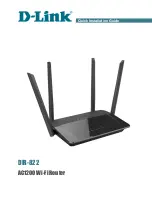
13-10
Cisco ME 3400 Ethernet Access Switch Software Configuration Guide
OL-9639-07
Chapter 13 Configuring IEEE 802.1Q Tunneling and Layer 2 Protocol Tunneling
Configuring Layer 2 Protocol Tunneling
For example, in
Figure 13-6
, Customer A has two switches in the same VLAN that are connected
through the SP network. When the network tunnels PDUs, switches on the far ends of the network can
negotiate the automatic creation of EtherChannels without needing dedicated lines. See the
“Configuring
Layer 2 Tunneling for EtherChannels” section on page 13-14
for instructions.
Figure 13-6
Layer 2 Protocol Tunneling for EtherChannels
Configuring Layer 2 Protocol Tunneling
You can enable Layer 2 protocol tunneling (by protocol) on the ports that are connected to the customer
in the edge switches of the service-provider network. The service-provider edge switches connected to
the customer switch perform the tunneling process. Edge-switch tunnel ports are connected to customer
802.1Q trunk ports. Edge-switch access ports are connected to customer access ports. The edge switches
connected to the customer switch perform the tunneling process.
You can enable Layer 2 protocol tunneling on ports that are configured as access ports, tunnel ports, or
trunk ports. The switch supports Layer 2 protocol tunneling for CDP, STP, and VTP. For emulated
point-to-point network topologies, it also supports PAgP, LACP, and UDLD protocols. The switch does
not support Layer 2 protocol tunneling for LLDP.
Caution
PAgP, LACP, and UDLD protocol tunneling is only intended to emulate a point-to-point topology. An
erroneous configuration that sends tunneled packets to many ports could lead to a network failure.
When the Layer 2 PDUs that entered the service-provider inbound edge switch through a Layer 2
protocol-enabled port exit through the trunk port into the service-provider network, the switch
overwrites the customer PDU-destination MAC address with a well-known Cisco proprietary multicast
address (01-00-0c-cd-cd-d0). If 802.1Q tunneling is enabled, packets are also double-tagged; the outer
tag is the customer metro tag, and the inner tag is the customer’s VLAN tag. The core switches ignore
the inner tags and forward the packet to all trunk ports in the same metro VLAN. The edge switches on
the outbound side restore the proper Layer 2 protocol and MAC address information and forward the
packets to all Layer 2 protocol-enabled access ports, tunnel ports, and trunk ports in the same metro
VLAN. Therefore, the Layer 2 PDUs remain intact and are delivered across the service-provider
infrastructure to the other side of the customer network.
See
Figure 13-4
, with Customer X and Customer Y in access VLANs 30 and 40, respectively.
Asymmetric links connect the customers in Site 1 to edge switches in the service-provider network. The
Layer 2 PDUs (for example, BPDUs) coming into Switch B from Customer Y in Site 1 are forwarded to
Switch A
VLAN 17
VLAN 18
VLAN 19
VLAN 20
VLAN 17
VLAN 18
VLAN 19
VLAN 20
Switch B
Switch C
Service
Provider
EtherChannel 1
Customer A
Site 1
Customer A
Site 2
101844
Switch D
EtherChannel 1
Trunk
Asymmetric link
Summary of Contents for ME 3400 Series
Page 40: ...Contents xl Cisco ME 3400 Ethernet Access Switch Software Configuration Guide OL 9639 07 ...
Page 44: ...xliv Cisco ME 3400 Ethernet Access Switch Software Configuration Guide OL 9639 07 Preface ...
Page 1138: ...Index IN 52 Cisco ME 3400 Ethernet Access Switch Software Configuration Guide OL 9639 07 ...
















































